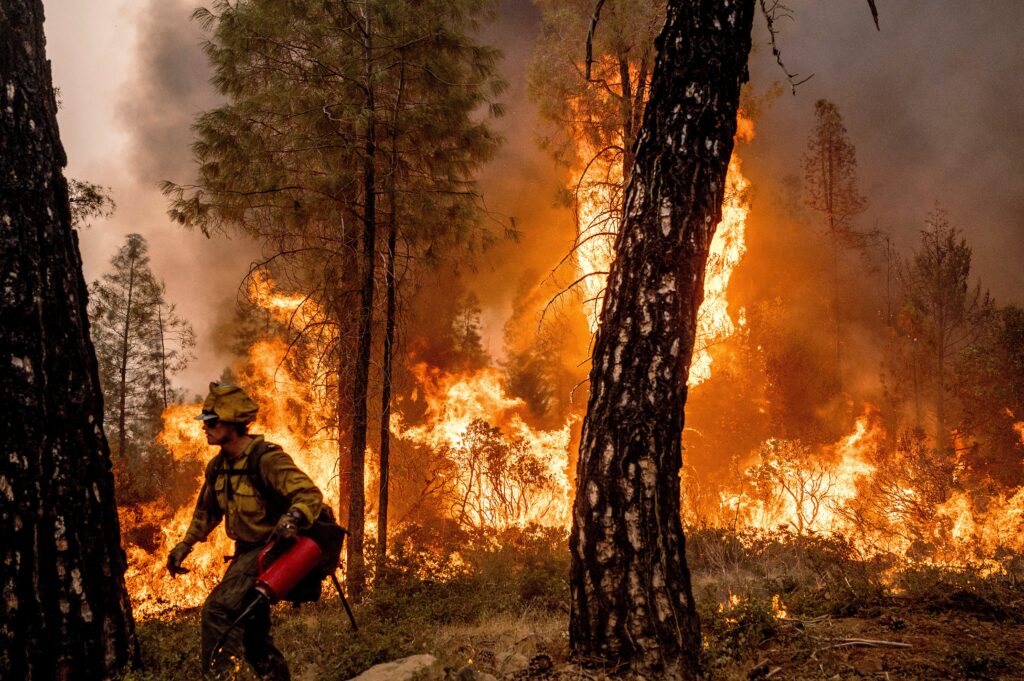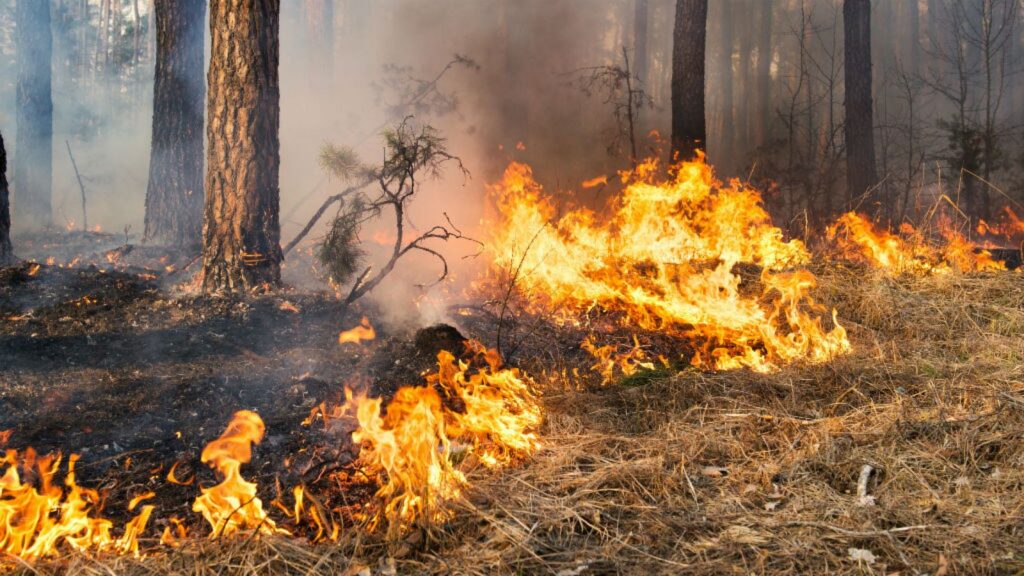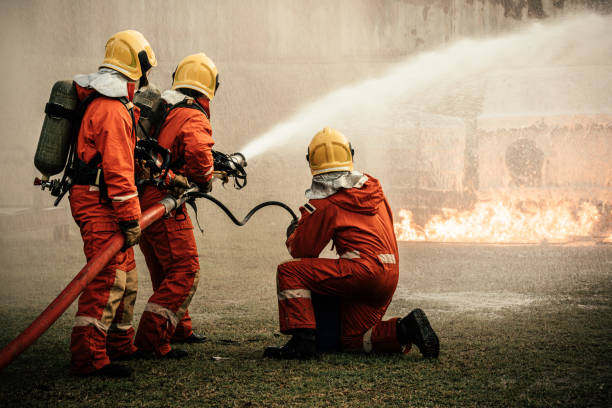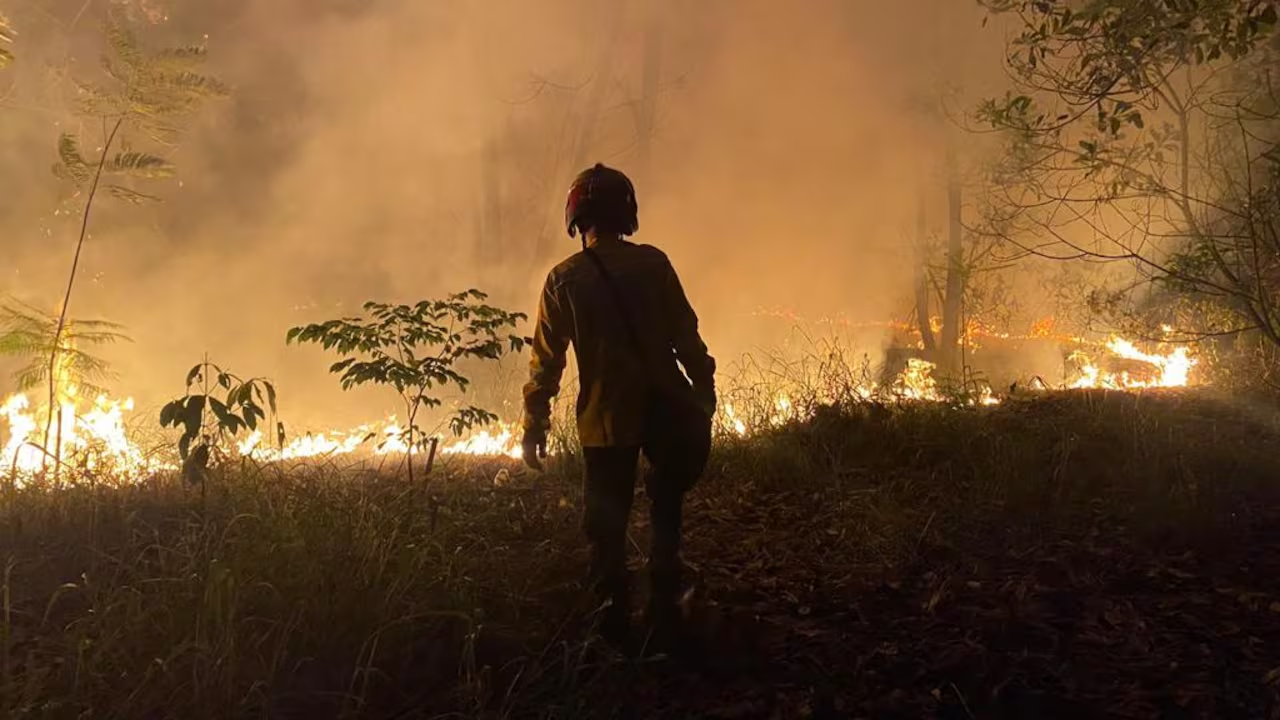Introduction
Red flag warnings, known as Alerta De Bandera Roja (Clima Propicio Para Incendios) in Spanish, are critical alerts indicating weather conditions that increase the likelihood of wildfires. Understanding these warnings is crucial for those living in fire-prone areas. When issued, a red flag warning highlights a combination of environmental factors that can quickly escalate fire spread.
What Triggers a Red Flag Warning?
Red flag warnings, or Alerta De Bandera Roja (Clima Propicio Para Incendios), are issued when certain weather conditions align, creating a high risk of wildfires. High temperatures, low humidity, and strong winds are key factors in these warnings. Such conditions make it easy for fires to ignite and spread rapidly, posing severe threats to people and properties.
Also read, Showbizztoday.com.
Warm Temperatures and Increased Fire Risk
High temperatures play a significant role in red flag warnings. Heat accelerates the drying of vegetation, making it more flammable. Additionally, hot air can create unstable atmospheric conditions, increasing fire spread risk. During hot periods, heightened vigilance and preventive measures are necessary to reduce wildfire risks.

Low Humidity Levels
Low humidity levels greatly influence red flag warnings’ severity. As humidity decreases, vegetation loses moisture, becoming more flammable. Dry air allows flames to spread quickly by igniting surrounding vegetation more rapidly. Monitoring humidity during Alerta De Bandera Roja (Clima Propicio Para Incendios) is essential to assess fire activity potential.
Impact of Strong Winds on Fire Behavior
Strong winds significantly worsen wildfire risks during red flag conditions. Winds can spread flames rapidly and carry burning embers over long distances, starting new fires. Additionally, gusty winds can hinder firefighting efforts by fanning flames and changing fire behavior unpredictably. Understanding wind patterns and their effects on fire spread is crucial for managing fires during Alerta De Bandera Roja (Clima Propicio Para Incendios).
Drought Conditions and Fire Vulnerability
Drought conditions greatly increase an area’s wildfire susceptibility. Extended drought periods dry out vegetation, creating ample fuel for fires. Drought-stressed vegetation is also more prone to ignition, raising the risk of fires. Red flag warnings, or Alerta De Bandera Roja (Clima Propicio Para Incendios), often coincide with drought conditions, highlighting the increased fire danger during dry spells.

Red Flag Warning Protocol: What to Do
Following local authorities’ safety protocols during a red flag warning is crucial. Avoid activities that could spark fires, such as outdoor burning or using heat-generating equipment. Stay informed about changing weather conditions and follow evacuation orders if necessary. Preparedness and quick action can mitigate wildfire impacts during Alerta De Bandera Roja (Clima Propicio Para Incendios).
Monitoring Red Flag Warnings
Staying informed about red flag warnings is vital for those living in fire-prone areas. Monitor local weather forecasts and official communication channels for fire weather updates. Understand the criteria for issuing Alerta De Bandera Roja (Clima Propicio Para Incendios) and take proactive steps to protect lives and property. Being informed and prepared helps communities respond better to wildfire threats during red flag events.
Community Preparedness and Collaboration
Community preparedness is essential for reducing wildfire impacts during red flag warnings. Implement fire-safe practices, such as maintaining defensible space around properties and participating in community wildfire preparedness programs. Collaborating with neighbors, local fire departments, and emergency responders fosters a collective approach to wildfire prevention and response.

Firefighter Readiness and Response
During Alerta De Bandera Roja (Clima Propicio Para Incendios), firefighters remain on high alert, ready to respond quickly to wildfires. Fire agencies prioritize resource allocation and coordination to combat fires under challenging weather conditions effectively. Community support and following evacuation orders aid firefighters and enhance overall response efforts. Recognizing firefighters’ dedication and sacrifice is important during heightened fire activity.
Visit more, treeleftbig.shop.
Emergency Evacuation Procedures
In case of a wildfire during a red flag warning, follow evacuation procedures promptly and safely. Have an evacuation plan and an emergency kit with essential supplies. Stay updated on evacuation routes and follow authorities’ orders. Prioritize personal safety and evacuate early if instructed, as wildfires can escalate quickly under Alerta De Bandera Roja (Clima Propicio Para Incendios).
Public Safety Measures: Reducing Fire Risk
Public safety measures are crucial for lowering wildfire risks during red flag warnings. Implement temporary restrictions on fire-igniting activities, such as fireworks or campfires, to reduce fire danger. Educate the public on fire safety practices and the importance of wildfire prevention to foster a responsible and aware community.
Environmental Impacts of Wildfires
Wildfires caused by red flag conditions have significant environmental impacts beyond immediate fire damage. Smoke emissions from wildfires degrade air quality, posing health risks to humans and wildlife. Habitat loss and ecosystem destruction further worsen wildfires’ ecological consequences. Addressing wildfires’ long-term environmental impacts requires concerted restoration and conservation efforts.

Climate Change and Wildfire Trends
The rising frequency and severity of wildfires worldwide are closely linked to climate change. Increasing temperatures, prolonged droughts, and changing precipitation patterns create conditions conducive to wildfires. Addressing climate change through mitigation and adaptation is essential to reduce future wildfire risks. Global collaborative action is necessary to tackle the root causes of wildfire vulnerability.
You may also like Human Gathering Fake.
Conclusion
Understanding the significance of red flag warnings (Alerta De Bandera Roja (Clima Propicio Para Incendios)) is crucial for communities at risk of wildfires. By recognizing the environmental factors contributing to fire risks and following safety protocols, individuals can minimize the wildfire threat during red flag events. Stay informed, prepared, and prioritize safety to reduce wildfire impacts and protect lives and property.
FAQs on Red Flag Warnings (Alerta De Bandera Roja)
What is a red flag warning?
A red flag warning is an alert issued by weather authorities indicating that weather conditions are ideal for the rapid spread of wildfires. These conditions often include high temperatures, low humidity, and strong winds.
What does “Alerta De Bandera Roja (Clima Propicio Para Incendios)” mean?
Alerta De Bandera Roja (Clima Propicio Para Incendios) translates to “Red Flag Warning (Fire-Prone Weather Conditions)” in English. It is a term used to describe conditions that significantly increase the risk of wildfires.
What weather conditions trigger a red flag warning?
A red flag warning is triggered by a combination of weather conditions such as:
- High temperatures
- Low humidity levels
- Strong and gusty winds
- Drought conditions
How can I stay informed about red flag warnings?
You can stay informed about red flag warnings by:
- Monitoring local weather forecasts
- Following official communication channels such as emergency services and fire departments
- Using weather apps and websites that provide real-time updates on fire weather conditions
What should I do during a red flag warning?
During a red flag warning, you should:
- Avoid activities that could start a fire, such as outdoor burning or using equipment that generates sparks
- Stay informed about changing weather conditions
- Follow evacuation orders if issued by authorities
- Prepare an emergency kit and have an evacuation plan in place
How do high temperatures affect fire risk?
High temperatures dry out vegetation, making it more flammable. This, combined with other conditions, can lead to a higher risk of wildfires spreading rapidly.
Why is low humidity a concern during red flag warnings?
Low humidity reduces the moisture content in vegetation, making it more susceptible to ignition. Dry air also helps fires spread more quickly by allowing flames to engulf surrounding vegetation faster.
How do strong winds impact wildfire behavior?
Strong winds can rapidly spread flames and carry burning embers over long distances, starting new fires. Winds can also challenge firefighting efforts by fanning flames and changing fire behavior unpredictably.
How does drought increase wildfire risk?
Drought conditions lead to drier vegetation, creating abundant fuel for fires. Drought-stressed vegetation is also more prone to ignition, further escalating the risk of wildfires.
What are some safety measures to reduce fire risk during a red flag warning?
To reduce fire risk during a red flag warning, you should:
- Implement temporary restrictions on activities that could start fires, such as fireworks or campfires
- Educate yourself and your community about fire safety practices
- Maintain defensible space around your property by clearing dry vegetation
What should I include in an emergency kit for wildfire evacuations?
Your emergency kit should include:
- Non-perishable food and water
- A first aid kit
- Important documents (ID, insurance papers)
- Medications
- Flashlights and batteries
- Clothing and blankets
- Personal hygiene items
How can communities prepare for red flag warnings?
Communities can prepare for red flag warnings by:
- Establishing fire-safe practices, such as maintaining defensible space around properties
- Participating in community wildfire preparedness programs
- Collaborating with neighbors, local fire departments, and emergency responders to create a collective approach to wildfire prevention and response
How do red flag warnings relate to climate change?
The increasing frequency and severity of wildfires are closely linked to climate change. Rising temperatures, prolonged droughts, and changing precipitation patterns create conditions conducive to wildfires. Addressing climate change through mitigation and adaptation is essential to reduce future wildfire risks.
What are the environmental impacts of wildfires during red flag conditions?
Wildfires triggered by red flag conditions can:
- Degrade air quality due to smoke emissions
- Pose health risks to humans and wildlife
- Destroy habitats and ecosystems
- Require extensive efforts in restoration and conservation to address long-term environmental impacts
Why is community collaboration important during red flag warnings?
Community collaboration is crucial for effective wildfire prevention and response. Working together with neighbors, local fire departments, and emergency responders helps ensure that everyone is prepared and can act swiftly in case of a wildfire, reducing the overall impact on the community.
How can I support firefighters during red flag warnings?
You can support firefighters by:
- Following evacuation orders promptly to ensure their safety and yours
- Preparing your property by clearing flammable materials
- Staying informed and ready to act quickly
- Recognizing and appreciating the dedication and sacrifices made by firefighters during heightened fire activity.
